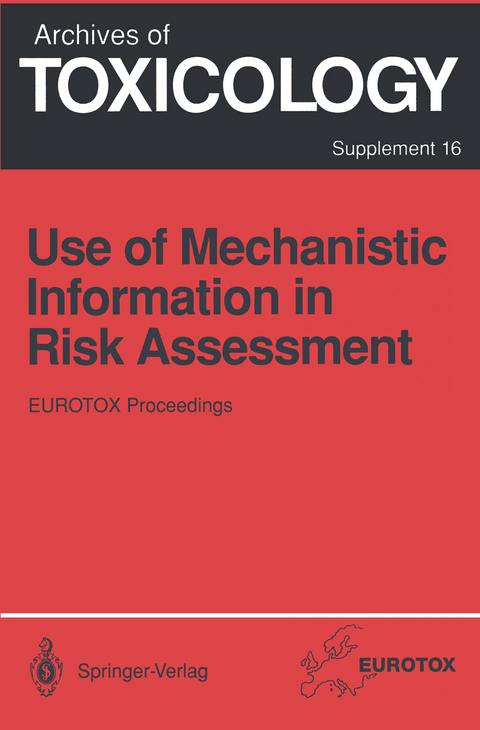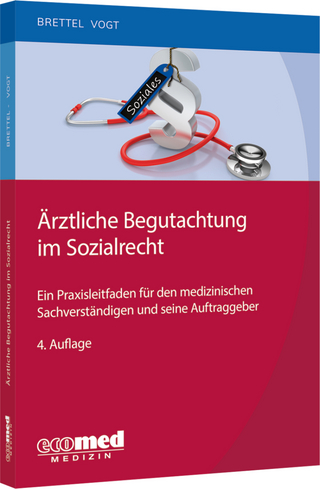
Use of Mechanistic Information in Risk Assessment
Springer Berlin (Verlag)
978-3-642-78642-6 (ISBN)
Baltic Sea Pollution.- Ecology of the Baltic - Introduction.- Presence and Sources of Pollutants in the Baltic Sea.- Interrelationship Between Eutrophication and Effects of Pollutants.- Effects of Toxic Metal Pollutants on the Ecology of the Baltic Sea.- Effects of Persistent Organic Pollutants on Biota in the Baltic Sea.- Human Health Risk Assessment and Risk Perception Related to the Baltic Sea.- Contact and Respiratory Sensitisation.- Immunoregulation of T Cell-Mediated Skin Hypersensitivity.- Test Methods for Contact Sensitisation.- Test Methods for Respiratory Sensitisation.- Newer Approaches to the Evaluation of Sensitisation Phenomena.- Risk Assessment of Sensitizing Agents.- Developmental Toxicity.- Nuclear Retinoic Acid Receptors and Regulation of Gene Expression.- The Role of Retinoids in Normal Development and Retinoid-Induced Malformations.- Retinoid Teratogenesis: Toxicokinetics and Structure-Specificity.- The Neurochemical Effects of PCB Exposure are Age-Dependent.- Risk Estimation and Primary Prevention of Birth Defects.- Role of Mechanistic Studies of Toxicity in Risk Assessment.- The Role of Mechanistic Studies in Understanding Target Organ Toxicity.- Rational Species Extrapolation of Toxic Effects.- Predicting the Toxic Dose or Concentration. Is there a Difference?.- The Role of Investigative Toxicology in Pharmaceutical Industry.- Mechanisms of Metal Toxicity.- Metal-Induced Autoimmunity.- Genotoxic Effects of Metal Compounds.- Toxicokinetics of Drugs.- The Importance of Exposure Measurements in Risk Assessment of Drugs.- The Impact of Genetic Polymorphisms in Risk Assessment of Drugs.- Kinetic Analysis Using Positron Emission Tomography.- The Application of Modelling in Toxicokinetics.- Alterations in Kinetic Parameters Resulting in Modification ofToxicity.- Mechanisms of Carcinogenicity and Risk Assessment.- Importance of Genetic Alterations in Tumour Development.- Transgenic Mouse Models in Chemical Carcinogenesis Studies.- Cell Proliferation and Cell Death in Rat Liver Carcinogenesis by Chemicals.- Use of Mechanistic and Other Data in Identifying Carcinogens: A Review Based on the IARC Monographs Programme.- Late Manuscripts.- Developmental Toxicity - Magnitude of the Problem.- Health Problems Related to Respiratory Sensitisation.- Young Scientists Poster Award.- Neonatal Exposure to the Organophosphate DFP Induces Changes in Behaviour and Muscarinic Receptor Density in the Adult Mous.
| Erscheint lt. Verlag | 29.12.2011 |
|---|---|
| Reihe/Serie | Archives of Toxicology |
| Zusatzinfo | VIII, 312 p. |
| Verlagsort | Berlin |
| Sprache | englisch |
| Maße | 155 x 235 mm |
| Gewicht | 492 g |
| Themenwelt | Medizin / Pharmazie ► Medizinische Fachgebiete ► Arbeits- / Sozial- / Umweltmedizin |
| Medizin / Pharmazie ► Medizinische Fachgebiete ► Pharmakologie / Pharmakotherapie | |
| Naturwissenschaften ► Biologie ► Biochemie | |
| Schlagworte | Baltic Sea Pollution • ecotoxicology • Environment • environmental protection • gene expression • Kinetics • Mißbildung • perception • Pharmacokinetics • pharmacology • Pharmakologie • prevention • receptor • Research • risk assessment • Teratology • Toxicity • Toxicological Mechanisms • Toxicology • Toxikologie • Umweltschutz |
| ISBN-10 | 3-642-78642-1 / 3642786421 |
| ISBN-13 | 978-3-642-78642-6 / 9783642786426 |
| Zustand | Neuware |
| Informationen gemäß Produktsicherheitsverordnung (GPSR) | |
| Haben Sie eine Frage zum Produkt? |
aus dem Bereich


